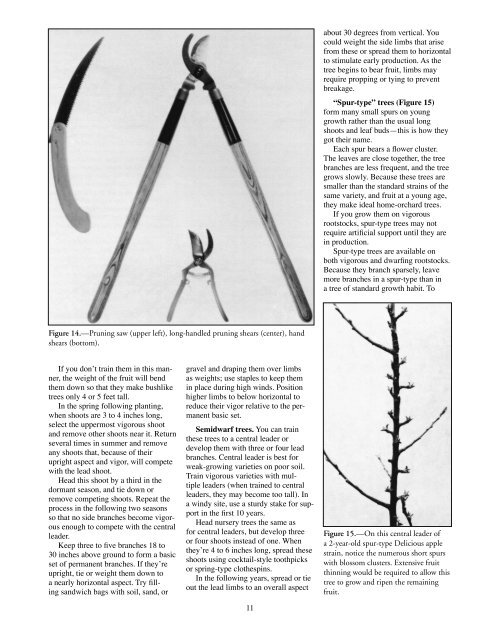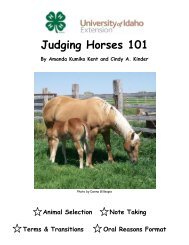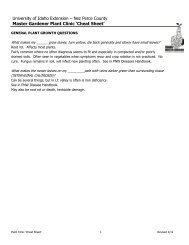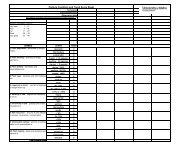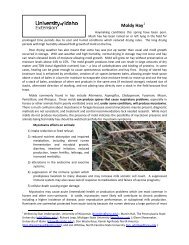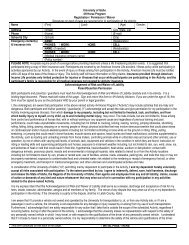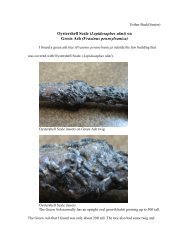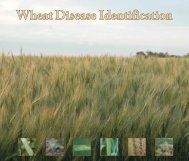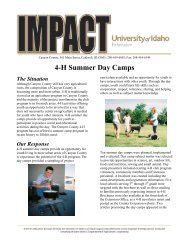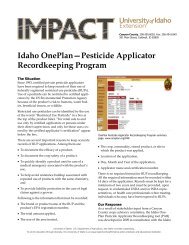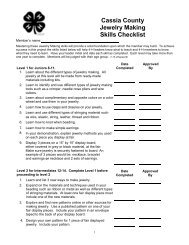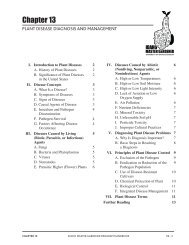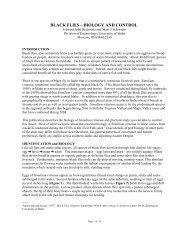Training and Pruning Your Home Orchard, PNW 400 (Oregon State ...
Training and Pruning Your Home Orchard, PNW 400 (Oregon State ...
Training and Pruning Your Home Orchard, PNW 400 (Oregon State ...
Create successful ePaper yourself
Turn your PDF publications into a flip-book with our unique Google optimized e-Paper software.
about 30 degrees from vertical. You<br />
could weight the side limbs that arise<br />
from these or spread them to horizontal<br />
to stimulate early production. As the<br />
tree begins to bear fruit, limbs may<br />
require propping or tying to prevent<br />
breakage.<br />
“Spur‐type” trees (Figure 15)<br />
form many small spurs on young<br />
growth rather than the usual long<br />
shoots <strong>and</strong> leaf buds—this is how they<br />
got their name.<br />
Each spur bears a flower cluster.<br />
The leaves are close together, the tree<br />
branches are less frequent, <strong>and</strong> the tree<br />
grows slowly. Because these trees are<br />
smaller than the st<strong>and</strong>ard strains of the<br />
same variety, <strong>and</strong> fruit at a young age,<br />
they make ideal home‐orchard trees.<br />
If you grow them on vigorous<br />
rootstocks, spur‐type trees may not<br />
require artificial support until they are<br />
in production.<br />
Spur‐type trees are available on<br />
both vigorous <strong>and</strong> dwarfing rootstocks.<br />
Because they branch sparsely, leave<br />
more branches in a spur‐type than in<br />
a tree of st<strong>and</strong>ard growth habit. To<br />
Figure 14.—<strong>Pruning</strong> saw (upper left), long‐h<strong>and</strong>led pruning shears (center), h<strong>and</strong><br />
shears (bottom).<br />
If you don’t train them in this manner,<br />
the weight of the fruit will bend<br />
them down so that they make bushlike<br />
trees only 4 or 5 feet tall.<br />
In the spring following planting,<br />
when shoots are 3 to 4 inches long,<br />
select the uppermost vigorous shoot<br />
<strong>and</strong> remove other shoots near it. Return<br />
several times in summer <strong>and</strong> remove<br />
any shoots that, because of their<br />
upright aspect <strong>and</strong> vigor, will compete<br />
with the lead shoot.<br />
Head this shoot by a third in the<br />
dormant season, <strong>and</strong> tie down or<br />
remove competing shoots. Repeat the<br />
process in the following two seasons<br />
so that no side branches become vigorous<br />
enough to compete with the central<br />
leader.<br />
Keep three to five branches 18 to<br />
30 inches above ground to form a basic<br />
set of permanent branches. If they’re<br />
upright, tie or weight them down to<br />
a nearly horizontal aspect. Try filling<br />
s<strong>and</strong>wich bags with soil, s<strong>and</strong>, or<br />
gravel <strong>and</strong> draping them over limbs<br />
as weights; use staples to keep them<br />
in place during high winds. Position<br />
higher limbs to below horizontal to<br />
reduce their vigor relative to the permanent<br />
basic set.<br />
Semidwarf trees. You can train<br />
these trees to a central leader or<br />
develop them with three or four lead<br />
branches. Central leader is best for<br />
weak-growing varieties on poor soil.<br />
Train vigorous varieties with multiple<br />
leaders (when trained to central<br />
leaders, they may become too tall). In<br />
a windy site, use a sturdy stake for support<br />
in the first 10 years.<br />
Head nursery trees the same as<br />
for central leaders, but develop three<br />
or four shoots instead of one. When<br />
they’re 4 to 6 inches long, spread these<br />
shoots using cocktail‐style toothpicks<br />
or spring‐type clothespins.<br />
In the following years, spread or tie<br />
out the lead limbs to an overall aspect<br />
11<br />
Figure 15.—On this central leader of<br />
a 2‐year‐old spur‐type Delicious apple<br />
strain, notice the numerous short spurs<br />
with blossom clusters. Extensive fruit<br />
thinning would be required to allow this<br />
tree to grow <strong>and</strong> ripen the remaining<br />
fruit.


